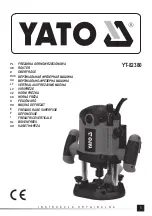
Figure 10.3: The root bridge calculating the path cost to switch D.
The lowest calculated path is not always the most ideal path. For example, if multiple high−speed links to a
destination exist, the links may total more than the cost of a very slow link, such as a modem. Even though the
straight path has the fewest hops, it is much slower than using a high−speed, longer path. To overcome this
problem, you as the administrator can manually change a slower−speed link to have a higher port cost, which
STP will use to calculate a higher path cost. The goal is to make changes to the network so that the fastest,
most efficient route to the root port is designated for the switch to use. The fastest links should always have
the lowest port costs.
A designated bridge is the bridge or switch on each LAN that provides the shortest route with the least path
cost. The designated bridge is the only bridge that is allowed to forward frames to and from the other bridges.
A designated port on the switch is the port that connects the switch to the physical interface of the designated
bridge.
Bridge Protocol Data Units
BPDUs are messages passed between bridges and switches to help STP calculate and learn the topology of the
network. The multicast messages contain information that identifies the network link, the bridge presumed to
be the root bridge, the calculated root path cost, other STP bridges, port identifiers, and the age of the
information contained in the message.
STP member bridges and switches exchange BPDU messages at configurable intervals—typically, every one
to four seconds. By default, BPDUs are sent out every two seconds on every port to ensure a stable network
without accidental data loops. Should one or more bridges fail or another STP member join the network,
BPDU messages will help the other STP member bridges and switches to notice this change in the network
topology. The neighboring bridges will detect the lack of configuration messages and initiate an immediate
STA recalculation.
Note BPDU messages are never forwarded by any member. Instead, each STP bridge or switch makes a
decision locally based on BPDU messages received. The switch or bridge then creates a new BPDU
message based on the new information and sends that message out its ports.
Let’s take a look at the fields of a BPDU, as shown in Figure 10.4:
Figure 10.4: The 12 fields of a BPDU message.
Protocol Identifier—Contains 2 bytes and the value of zero.
•
203
Summary of Contents for Catalyst 1900 Series
Page 1: ......
















































